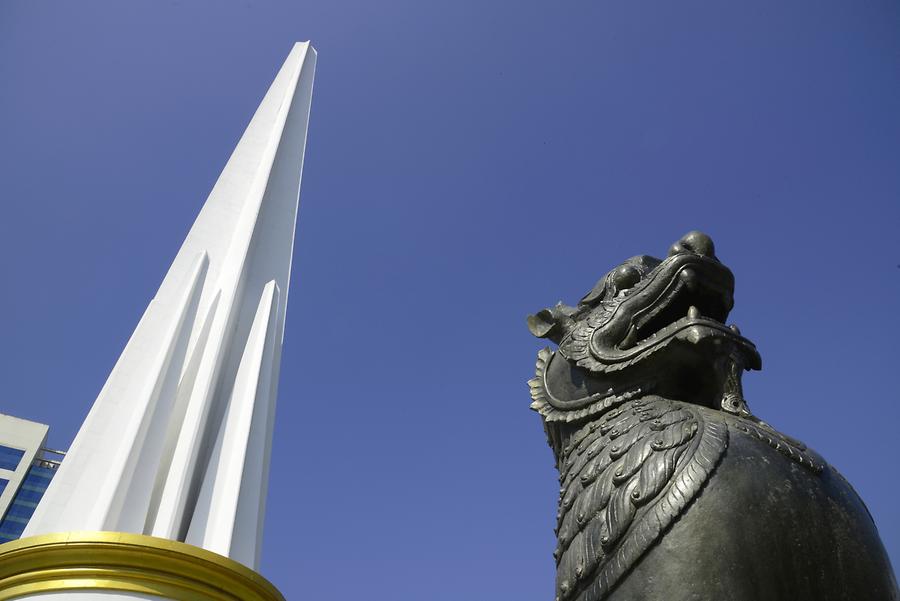Independence Monument#

Independence Monument, December 2013, © Gerhard Huber, under CC BY-NC 4.0 +Edu
Right in front of it the Independence Monument serves as a reminder of the separation from the British Empire. At the Northwestern corner of the spacious main square a building towers and serves as a starting point for all larger streets of the country and therefore it is often called the navel of Myanmar: the Sule Pagoda. The gilded stupa towers 46 m to the sky. Pagodas and Stupas like this one – also called “Cedis” in Burmese – not only serves to store relics, but also represent Buddhism as a whole. Whoever wants to understand this spiritually dominated country and its calm atmosphere in the least, will not be spared an excursion toward the Buddhist system of believes. This mystical world view started its emergence in the Nepalese Lumbini 2,500 years ago, when Siddhartha Gautama, the son of a Hindu nobleman, was born. When the spoiled prince left his sheltered parent’s house for the first time aged 29 to explore the world, he encountered a blind old man, a sick and a corpse. Shocked he realized that the world was fills with suffering. As a result he adopted a strict ascetic lifestyle and meditated for 7 years under a Bodhi tree until he became the Buddha – i. e. the “Enlightened One”. That is how the caste-free Buddhism came into being as an opposing pole to the strictly hierarchal Hinduism. But Buddhism also adopted its concept of Samsara, the everlasting circle of Rebirth.
Unmittelbar davor erinnert der Unabhängigkeitsobelisk an die Loslösung vom britischen Empire. Am nordwestlichen Eck des weitläufigen Hauptplatzes erhebt sich ein Gebäude, von dem alle großen Straßen des Landes ihren Anfang nehmen und das man gerne als Nabel Myanmars bezeichnet: die Sule Pagode. 46 m hoch ragt der vergoldete Stupa in den Himmel. Solche Pagoden oder Stupas, im birmanischen auch „Chedis“ genannt, dienen nicht nur zur Aufbewahrung von Reliquien, sondern repräsentieren den Buddhismus schlechthin. Wer das spirituell geprägte Myanmar mit seiner ruhigen Atmosphäre auch nur ansatzweise verstehen möchte, dem bleibt ein Ausflug in die buddhistische Gedankenwelt nicht erspart. Die mystische Weltsicht nahm ihren Ausgang vor 2500 Jahren im nepalesischen Lumbini, als der hinduistische Fürstensohn Siddharta Gautama das Licht der Welt erblickte. Als der verwöhnte Prinz sein wohlbehütetes Elternhaus im Alter von 29 Jahren erstmals verließ, um die Welt zu erkunden, erblickte er einen blinden Alten, einen Kranken und einen Toten. Schockiert erkannte er, dass die Welt voller Leiden war. Daraufhin unterzog er sich einer strengen Askese und meditierte 7 Jahre lang unter einem Bodhibaum, bis er schließlich zum Buddha, d.h. zum „Erleuchteten“ wurde. So entstand der kastenlose Buddhismus als Gegenpol zum stark hierarchischen Hinduismus, übernahm von diesem jedoch die Vorstellung von Samsara, den ewigen Kreislauf der Wiedergeburten.